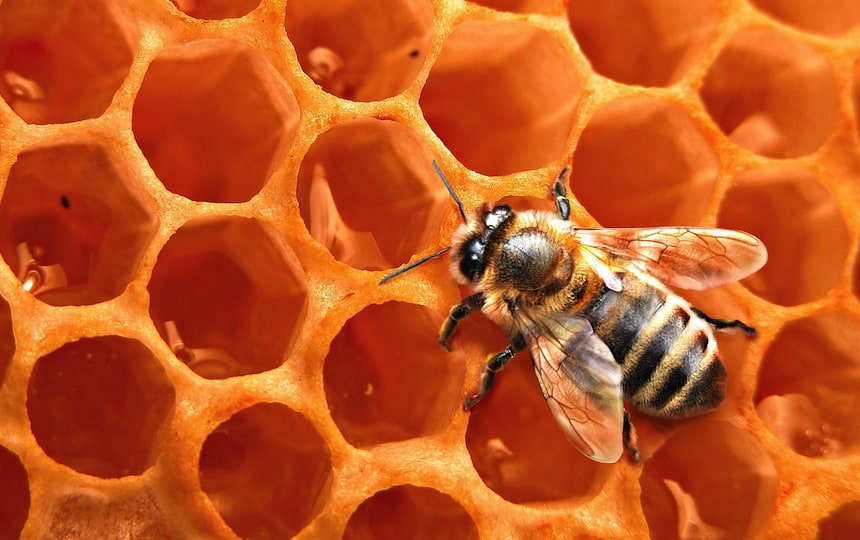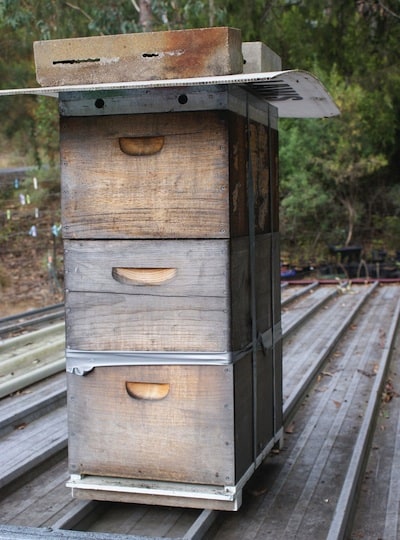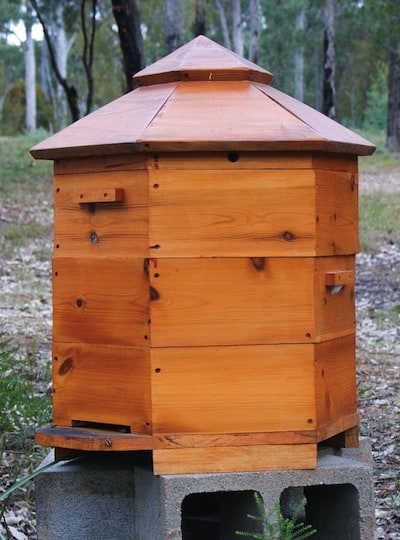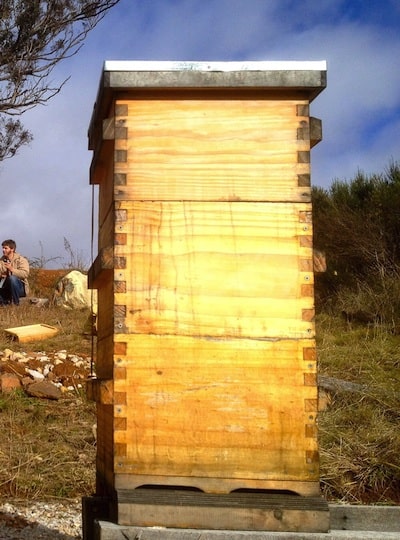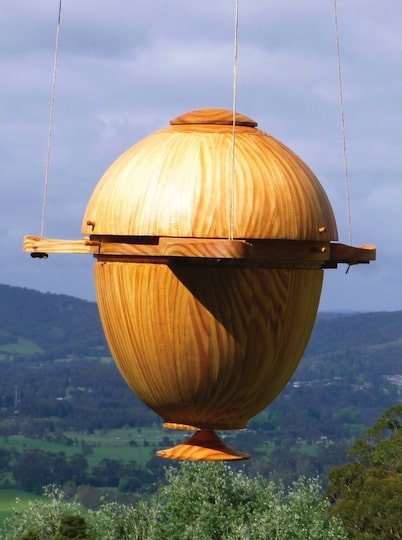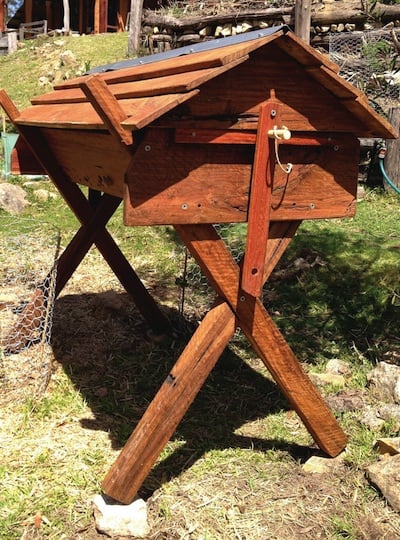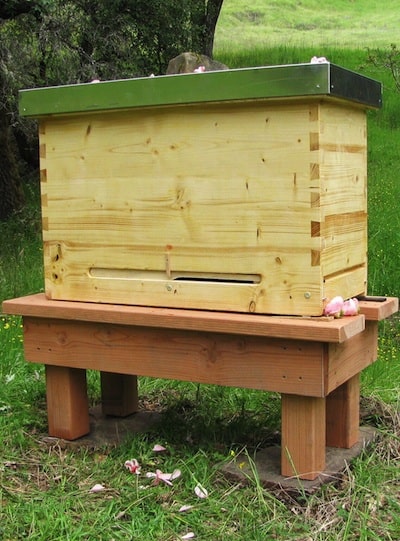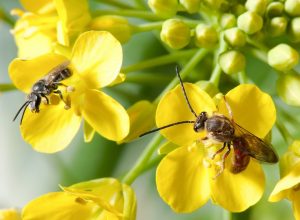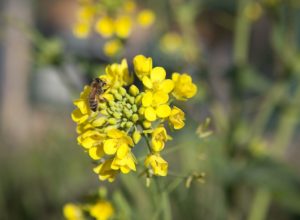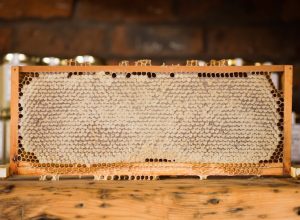Fancy yourself a budding beekeeper? We look at the pros and cons of six different types of beehives you can opt for when setting up your first beehive.
With so much focus on the plight of honeybees in the media in recent years, beekeeping has had a huge resurgence. Beehives are popping up in every suburb, in every city of the world. Everybody wants to help the bees!
However, sadly, often the types of beehives and the management techniques employed is not sufficiently well considered. Most colonies end up in conventional white box style hives such as the Langstroth.
Modern beekeeping practices mean hive movement, frequent hive inspections, artificial queen rearing programs, routine medication and sugar-water feeding, which reduce colony vitality and weaken the bees’ immunity.
Fortunately permaculturalists, and other holistic carers, with their understanding of ‘the big picture’, are promoting ‘natural beekeeping’ as an alternative – becoming ‘bee-carers’ rather than ‘beekeepers’.
Here are six different types of beehives you could opt for, and the pros and cons for each.
The 6 different types of beehives
Langstroth Hive
This is the most commonly used hive in many parts of the world – the hive boxes you see stacked when you travel through the countryside, usually white.
Pros:
- easy to manipulate, dissect and inspect
- honey can be extracted from the comb using a centrifugal extractor
- more honey can be harvested
- parts and hives are readily available at all beekeeping supply stores
- most beekeeping courses and books will teach using management techniques for this hive.
Cons:
- parts need to be measured and cut precisely to stop bees from filling gaps with either wax or propolis
- wiring and waxing frames with foundation is extremely time-consuming
- lots of fidgety parts and bits
- pests have lots of places to hide
- wax comb absorbs pesticides and heavy metals over time.
Conclusion
The Langstroth hive is a commercial beehive and, in my opinion, most of its management techniques have no place in backyard beekeeping!
The Hex Hive
A stackable, hexagonal-shaped hive designed and built by Willow Hankinson in Australia. It uses both, three-sided frames and top bars to fill in the gaps.
Pros:
- honey can be extracted from the framed honeycombs using a centrifugal extractor
- bees are encouraged to build natural comb
- the hexagonal tower shape eliminates cold spots by creating a natural vortex to circulate air flow
- the hive is hand crafted from reclaimed materials
- the queen has access to all areas of the hive.
Cons:
- parts need to be measured and cut precisely to stop bees from filling gaps with either wax or propolis
- pests have lots of places to hide
- access can only be gained by taking the roof off
- wax combs absorb pesticides and heavy metals over time
- full boxes are heavy to lift or move.
Conclusion
Beautifully constructed and developed for natural beekeeping.
Warré Hive
Introduced into Australia by Tim Malfroy in 2006, this hive was designed as a stackable, vertical top bar hive, but without frames.
Tim has modified this design by introducing three-sided frames. The hive comprises: a floor; three boxes, 300 mm square; frames without wire or foundation; a quilt; and a roof.
Pros:
- management principles are bee friendly
- bees are encouraged to build natural honeycomb
- shape allows a natural vortex to circulate air flow, minimising cold spots
- the queen has access to all areas of the hive
- boxes are easy to build – plans are readily available on the internet.
Cons:
- a lifting device is needed when adding a new box under two or more full boxes
- frames are not available to buy, and are difficult to make, even for good woodworkers
- when frames are used pests have lots of places to hide
- frames need to be measured and cut precisely to stop bees from filling gaps with either wax or propolis
- access can only be gained by taking the roof off.
Conclusion
A great hive for bees and beekeepers.
Dome Hive
This hive’s design was inspired by the bee-centricity of the Sun Hive (German, woven, aerial, dome-shaped). The hive is a curved top bar hive, and can be hung from a tree or shelter, or placed standing on a tripod.
It consists of 101 pieces of kiln-dried pine assembled into a top dome, a bottom dome and a central ring. Inside there are ten top bars for honeycomb, and two for ventilation.
Pros:
- the rounded shape promotes a healthy and strong colony
- pests have little place to hide because of the smoothness inside
- the queen has access to all areas of the hive
- the bottom comes away, which allows for easy inspection
- the top dome lifts, so top bars and comb can be lifted out
Cons:
- old brood combs will be difficult to cull.
Conclusion
I believe this is the ultimate bee- centric hive.
Kenyan Top Bar Hive (Les Crowder version)
The original was designed in Canada in 1971 for aid workers to take to Africa. The ‘Les Crowder’ version is better suited to the Australian environment than the Phil Chandler.
The body of the hive looks somewhat like a half hexagonal trough, of about 1.2 metres long and about 500 millimetres across the top. The sides taper down to form the hexagonal shape. About thirty-three bars rest across the top, forming the roof; this is what the bees attach their honeycomb to.
Pros:
- can be made using scrap timber with imprecise measurements – plans are readily available on the internet
- not many places for pests to hide
- inspection is from the side, minimising loss of heat and vital nest scent
- honey is harvested from the outer bars, away from the brood nest
- a smoker is rarely used; bees are more relaxed because their roof is not taken off
Cons:
- cross combing can occur
- a small amount of wax may sometimes attach to the wall of the hive
- not easily transportable.
Conclusion
I think the Kenyan is by far the simplest no fuss hive to use and really goes hand in hand when it comes to permaculture principles.
Golden Hive (Einraumbeute) or One-Room Hive
The Golden Hive was designed by Thomas Radetzki about 30 years ago for biodynamic beekeepers in Europe and introduced to Australia four years ago.
It is a one-room hive and has deep, large frames that can accommodate brood, pollen and honey on the one comb. It’s built using the golden mean numbers.
Pros:
- 30 years of use have proven it to be an exceptional hive for bee health
- the queen can move freely throughout the hive
- a wax cloth covers the top of the frames and can be rolled open to only expose one frame at a time. Fewer bees are disturbed this way
- no wire or foundation is used in the frames thin timber skewers built into the frames hold the comb stable when extracting
- the hive has a false wall that can be moved laterally to increase or decrease the size of the internal space when needed.
Cons:
- expensive extracting equipment is necessary unless comb is cut and crushed
- heavy to lift when it needs to be moved
- the oblong shape can create cold spots in winter
- parts need to be precisely measured and cut to stop bees from filling gaps with either wax or propolis
- pests have lots of places to hide due to the frames.
Conclusion
This is an excellent hive that really takes the bees’ wellbeing into consideration and also offers a commercial beekeeper a truly workable option.

